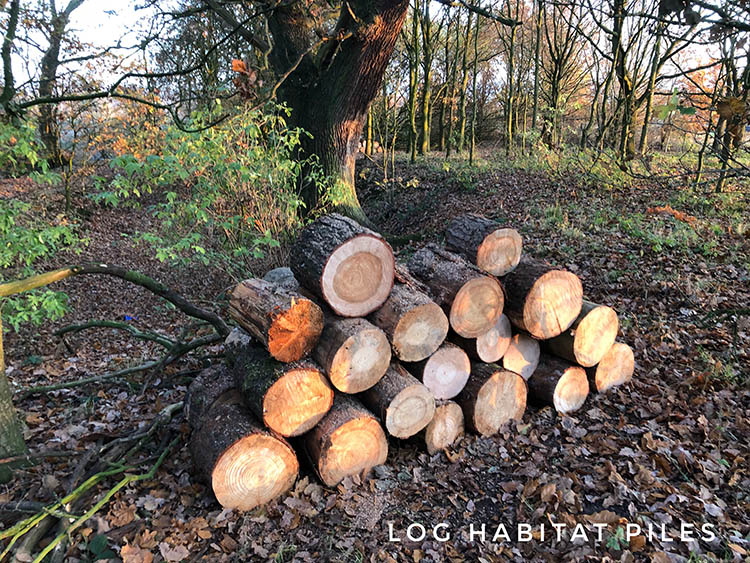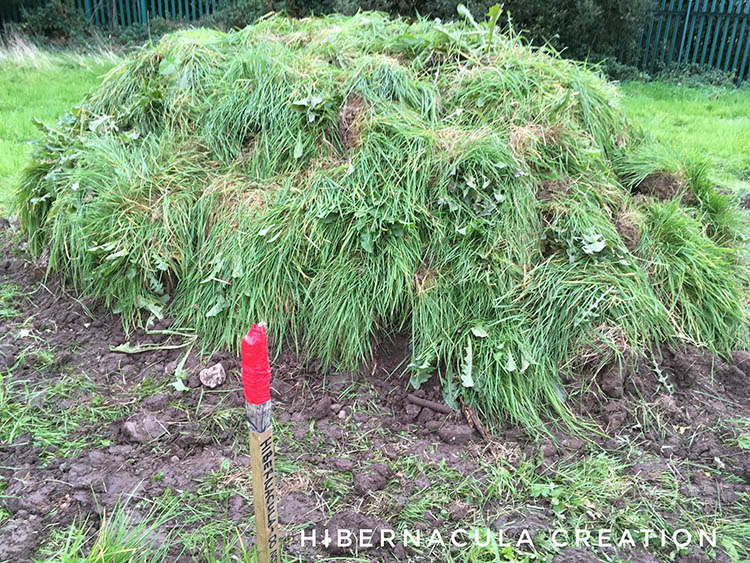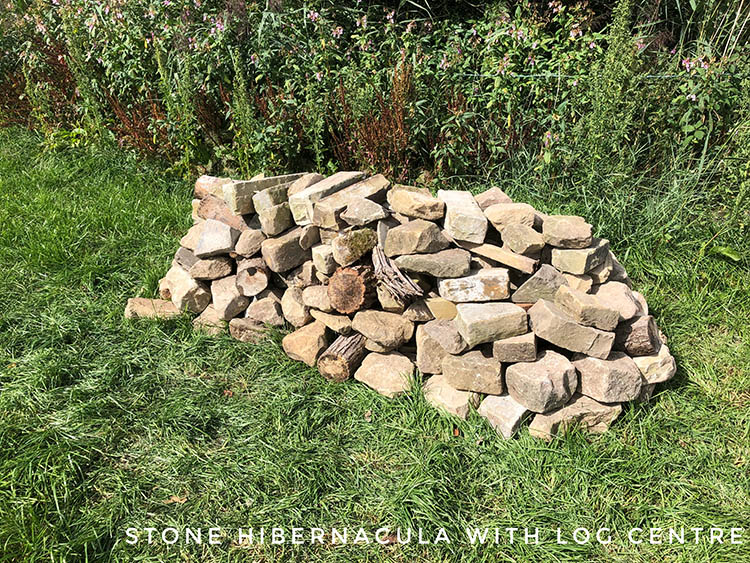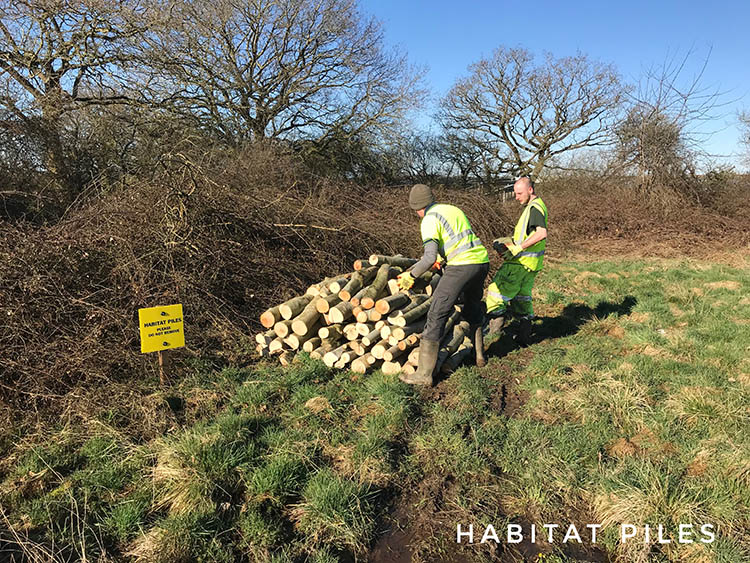Habitat creation in terrestrial environments is undertaken for a variety of reasons. But if you’re looking for a contractor who has the experience and know how to maximise the benefits to biodiversity when mitigating or providing replacement habitat in a terrestrial setting then Contract Ecology’s expertise is the answer.

Hibernacula Construction
Hibernacula’s are our most requested terrestrial habitat creation request. Hibernacula’s provide a safe haven for amphibians, reptiles, invertebrates and small mammals.
Most often our team are asked to create hibernacula for reptile mitigation projects and great crested newt mitigation projects. From simple structures like those outlined in Natural England guidance, to large creative dual purpose landforms, which add interest to public open spaces or double up as a boundary division.

Where possible we will reuse on site materials such as demolition waste or timber from vegetation clearance. This reduces landfill and costs.
We’ve created a lot of hibernacula for ecologists and developers across the UK. So we know that ground conditions vary considerably. Natural England specification recommends that hibernacula features be partially buried, usually between 300mm and 500mm deep. If we have already installed your amphibian or reptile fencing on site, we will be best placed to advise whether ground conditions are suitable for a dug in hibernacula. Heavy clay soils are prone to flooding over winter. If this occurs it will render the hibernacula useless for species hibernation. In this instance we will create the hibernacula above ground and add additional capping for frost protection.

Standing deadwood
Standing deadwood also known as snags is created in situ, usually in a woodland , fringe planting or along a hedgerow.
We create standing deadwood using both traditional bark disruption; cutting through the cambium layer and by glyphosate pellet techniques with our NPTC licensed operatives.
Standing deadwood provides an important ecosystem function. Producing microhabitats for fungi, lichen, invertebrates and birds all add to a healthy environment. We created standing deadwood habitat for birdlife at Widnes WwTW adjacent to the the Mersey Estuary which is a SSSI, SPA and RAMSAR site. Read our case study here.
Habitat piles
Habitat piles and log piles are great for replicating fallen deadwood. They are a valuable habitat for mosses, lichens and fungi, as well as many insects, amphibians and reptiles.

We can create habitat log piles by processing timber that we have felled on your site. Whether through site clearance operations or woodland management. Or if raw materials are in short supply or your trees are subject to a Tree Preservation Order (TPO) then we can import local timber for this purpose.